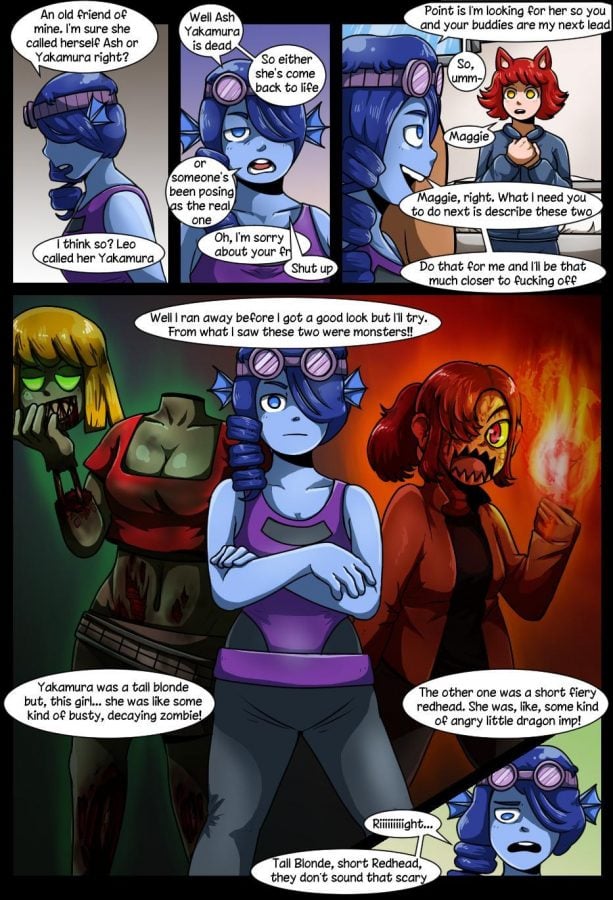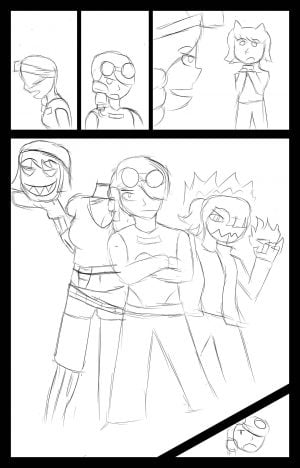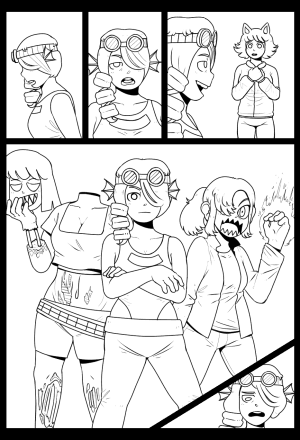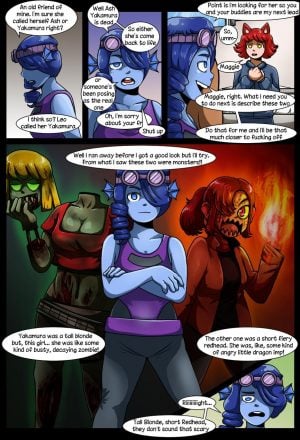Sitting in the back of the Lincoln Park Student Center, near the windows that overlook the Father Egan statute, students at DePaul will overhear processes of creation being yelled aloud among a group of friends. If one were to want to see the creator of the “Light and Dark” comic book that is gaining traction in work, see Rigoberto Gutierrez, who dons a gray fisherman cap, similar to that of George R.R. Martin, creator of the “Game of Thrones” novels.
DePaul acts as a rich campus that promotes creativity and encourages the use of art as a way of expression. Students navigate toward painting, creating short stories and slam poetry. However, for Gutierrez, being a comic book artist has combined his interest in script writing and creating a lasting image for his supporters at the same time.
Vice president of the DePaul Comic and Manga Club and soon to be president, Gutierrez began writing small scripts in his senior year of high school at UIC College Prep. As a way to pass time and entertain himself from the everyday boredom that comes with classes, Gutierrez put his pencil to his notebook whenever the chance was there, gaining influence from other comics such as “Watchmen.”
“Before my junior year, I came up with the idea of the characters in my head along with the environments they were in. I just thought of them to amuse myself and pass time,” Gutierrez said. “In my last year of high school, I started to write what came to mind. I wrote in multiple notebooks. I did some early concept art, but I’m not an artist. Any image is better than none.”
At DePaul, Gutierrez finally decided it was time to take things seriously in terms of publication. Despite having scripts and ideas, Gutierrez himself was no
t an artist with talent outside of this world. With scripts in hand and ideas in mind, Gutierrez took it upon himself to create a small team that would assist him in publishing his work for others to see visually.
“In the summer of 2014, one of my friends introduced me to my illustrator, Luis Garcia. In my head, I told myself, ‘the only way I am going to get this done is if I do this fairly. If I have an artist, I am going to have to pay them.’ In this summer, I started to work at my family’s store, and I used this money to pay my artist.”
A year after the comic received its first publication in 2015, the need for a full team of artists was needed. Emma Bartoo, a sophomore and colorist, joined the team in early 2016. With a team that would cover all creative fronts for the comic, “Light and Dark” was finally about to see the light of day without the stress caused by the work being done by only two people.
“As a supporter of the comic book, I have a real fascination with the characters and their individual superpowers. The powers are unpredictable in who is revealed to have them. I’ve always been a sucker for superpowers,” Bartoo said.
“The opportunity to join his team came after repeated calls for a colorist. I have experience coloring as a hobbyist, but never had real experience in a collaborative environment. I was hesitant at first, but was excited to finally be a part of a webcomic team.”
It was during this time that Gutierrez put his other w
orld on paper. In a world of characters with freak powers and vigilantes versus villains, Gutierrez carefully creates scripts that leave the reader guessing what is going to happen next. He also leaves intentional holes in a plot that make or may not make the hero you root for, in actuality, the villain you are suppose to hate.
In this made-up world, the story follows Amy Druvmenski. Throughout the editions of the comic, Amy’s rivalry with the Mayor of the city — New Hadden — only grows with violence. To make things worse, the Mayor is Amy’s father who will stop at nothing from casting her out as the villain. It is up to Amy to end her father’s corruption. As her weapon, she has the ability to set herself ablaze at any moment. This story has attracted many.
“Seeing my friend progress with his story, as well as his own talent develop stood out for me. There is also a genuine sense of important events on the horizon, narrative-wise, and I love stories that can grab me like that,” said fan and senior Andrew Anderson.
Creating the comic has become a formula for Gutierrez. First, the issue’s script is written by Gutierrez and contains ideas, words and the what the character is doing. Written similarly to a movie script, the comic scripts are very detailed from the action done and to the way it is portrayed in the comic.
Next, Gutierrez creates a rough visual for his illustrator, Luis Garcia. Along with this, Gutierrez inputs expressions that he wants from each character. After the visual goes through its first patch of visual update, bubble placements are made, along with corrections, if any, are done.
The third, and final step, is done with the help of the team’s colorist, Bartoo. The panels receive final touches and colorization with the detail that Gutierrez wants. As the comic is ready to receive publication, Gutierrez reviews every panel until it is to his liking.
With the finished product, it is then published online for the followers to consume via public comic platform, Tapas.
“On the surface I want them to be entertained. I want them to get a full emotional experience out of this. I want them to laugh, I want them to cry,” Gutierrez said. “But I also want it to be something the reader will back to and think about. Going deeper than that, I want to encourage the reader through the characters and conflict I introduce to move away from thinking in absolutes, to move away from seeing everything in a black/white and open up to the idea that everything will always be far more more complicated than that. And at the very least, we should all keep an open mind.”








